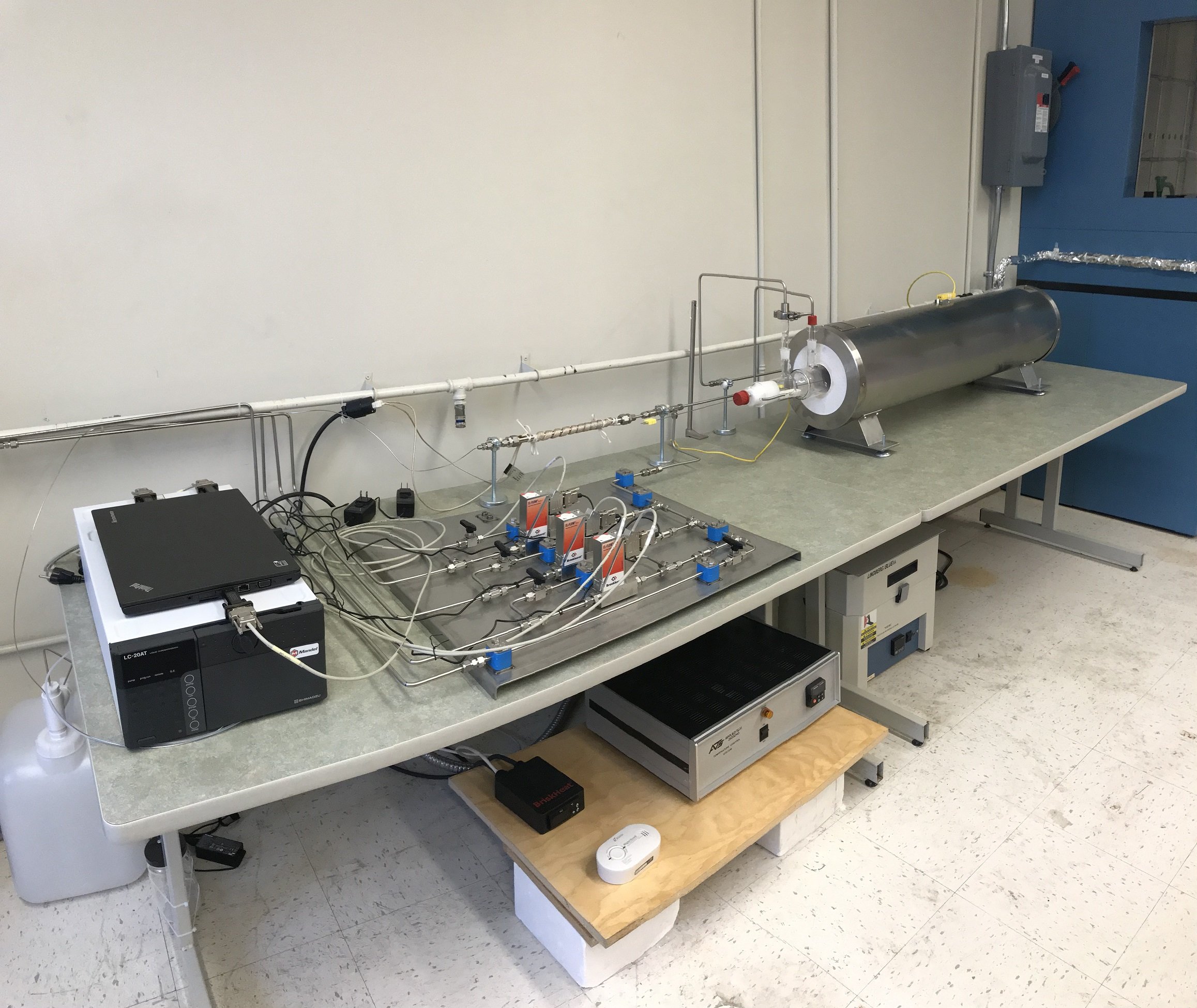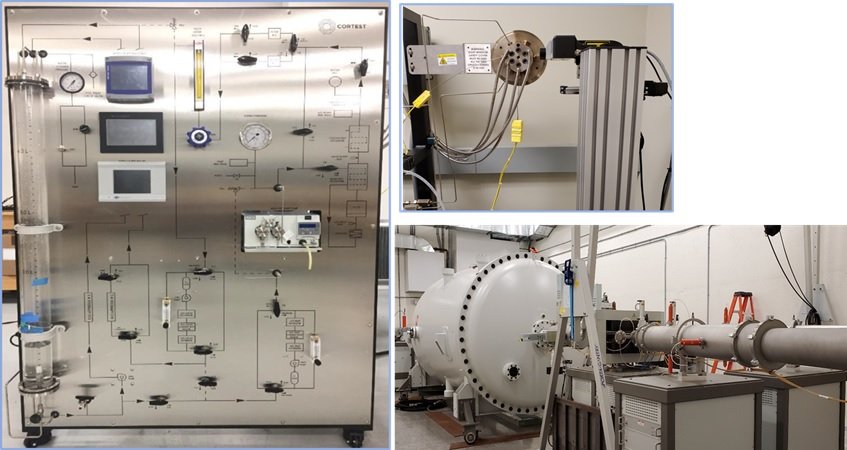
Facilities
Our primary research occurs in Nicol Hall, on the main campus of Queen’s University.
Static Autoclaves
These autoclaves allow for high-temperature and high-pressure corrosion tests in chemically aggressive environments. The autoclaves can hold a range of sample geometries and is adaptable for electrochemical analysis. These autoclaves can be applied to studying the corrosion of materials in any number of high-temperature environments, with the current testing focused on steam generator material corrosion in possible aggressive, occluded, environments.
Mixed Gas Corrosion System
This system allows for finely controlled ranges of gases and steam to be mixed and pre-heated before the samples are exposed in a temperature controlled tube furnace. Applications include materials in current reactors, and for proposed reactor designs (Very high-temperature gas reactors).
Steam Corrosion System
This system is utilized for the corrosion testing of materials in high-temperature (up to 1100°C) steam. Applications for this include testing the corrosion performance of proposed materials in accident tolerant fuel cladding designs. The gas control can also be adapted to inert dry gases, for the use of various heat treatments.
Slow Strain Rate Testing
This slow strain rate testing system is integrated with an autoclave and direct current potential drop (DCPD) system. This complete system allows for stress corrosion cracking testing to be performed on material in a controlled high-temperature environment and to detect crack initiation, for cracks as small as 5 micrometres.
Glovebox - Molten Salt Corrosion
We have a dedicated glovebox that has been adapted to perform molten salt corrosion testing. This system ensures an oxygen and moisture free environment to allow for a fine control of possible impurities in the sensitive molten salt experiments. The glovebox has been adapted to connect with a tube furnace, allowing for high-temperature corrosion experiments.
Corrosion Loop - On Beamline
This unique system integrates aqueous high-temperature corrosion along with on beamline studies, and in-situ oxide characterization with Raman spectroscopy. The entire system includes a water loop, corrosion cell adapted to fit on the RMTL beamline (see below for more details) and an optical window on that cell for in-situ spectroscopy characterization of the changing oxide as a function of both the aqueous environment and proton irradiation effects.
Metallographic Facilities
In Nicol Hall, we have direct access to the department metallographic facilities. This includes, polishing/grinding, microscopes, hardness testers, sample mounting, and chemical etching.
Reactor Materials Testing Lab
Our students have access to the Reactor Materials Testing Lab (RMTL), which is a state-of-the-art facility that was officially opened in 2015. The facility includes a proton and helium accelerator to introduce radiation damage and transmutation products into materials, mimicking the changes to materials occurring in a nuclear reactor. The RMTL facility also includes our corrosion loop (shown above) and the nuclear materials group SEM and TEM. Please click on the RMTL logo for direct access to the website.








